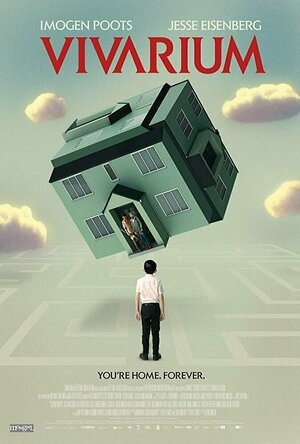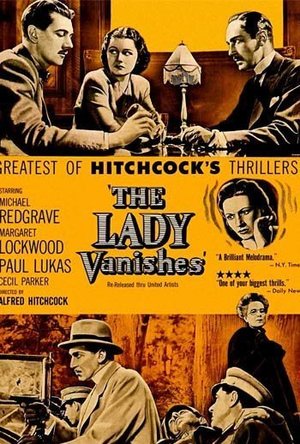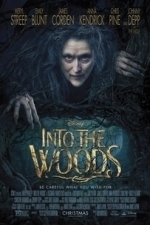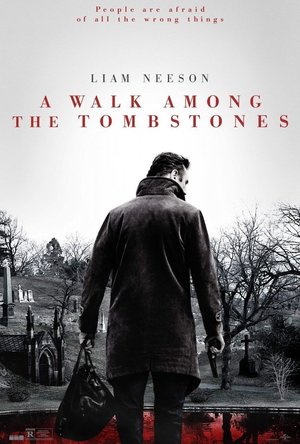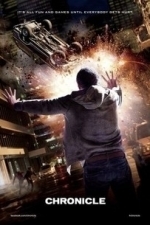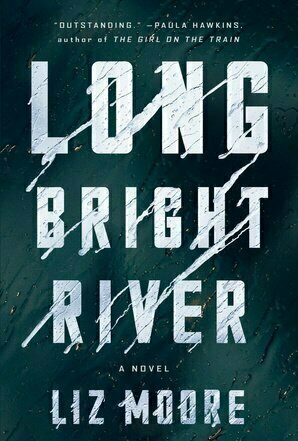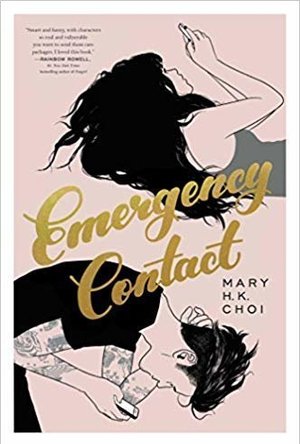Search
Search results
Emma @ The Movies (1786 KP) rated Vivarium (2020) in Movies
Mar 8, 2020
I like the idea of these weird and wonderful takes, when I saw the synopsis I knew it needed to make my LFF shortlist.
Tom and Gemma are looking to take the next step in their relationship, getting their very own home. On a whim they visit an oddly minimal estate agents where they meet Martin. Martin is enthusiastic about the chance to show them the perfect home in the perfect community, Yonder.
When they arrive in the deserted town it's instantly strange. Every house looks like the last, every street looks like the next, and Martin's enthusiasm never waivers. They decide to "dine and dash", politely look around and then leave to laugh about the whole experience on the way home, but as they complete their tour they realise that Martin has gone.
As the couple head home in their car they realise they're somehow lost, the simply designed neighbourhood has become a labyrinth that keeps leading them back to that same house. Maybe this is home after all.
Writing that extended synopsis was an exciting reminder of the idea at the core of Vivarium. Its story would definitely fit well into the recent trends of Black Mirror, Dimension 404 and Twilight Zone, and that was something that slightly hindered my enjoyment. Those formats work well in a compact episode size chunk, the film is only 97 minutes long but the content seems to have been stretched out to fit that runtime.
Towards the end of Vivarium we're introduced to a lot of information that you don't really have enough time to process, so much so that it feels like a rather unsatisfying development. That's where the similarities to the TV show idea ends, could it have benefitted from a sharper end? I'm not sure, perhaps that is all just part of the intrigue.
Jesse Eisenberg and Imogen Poots made quite a good match in the leads, from the off you can see their nature coming through, they're in sync and happy. As the situation deepens and they get more confused and frustrated you see them pulling apart while simultaneously clinging to each other because they're all that they have in the world. It's a lot of ups and downs for the characters to go through and yet the pair manage to make it work, with so much of (basically all of) the film relying on this dynamic I'm pleased that there was such a strong performance from them both.
It's difficult to express the way I feel about this film, I love the idea, the acting was great and the design of the town and the sets were picture perfect in that agonising horror kind of way (it reminded me of the fake 1950s towns they'd set up for atomic bomb testing), where I'm on the fence is the ending. Throwing in the scene that was out of tune with the rest of the film didn't add intrigue for me, but that being said, I'm still thinking about the film months after seeing it so... did it?
While my score might not necessarily seem like a recommendation I honestly think that everyone will take something different away from this about a wide range of things. I swing wildly between remembering the film without that ending to with it, and I don't know which version of the town I prefer seeing in my head...
Originally posted on: https://emmaatthemovies.blogspot.com/2020/03/vivarium-movie-review.html
Tom and Gemma are looking to take the next step in their relationship, getting their very own home. On a whim they visit an oddly minimal estate agents where they meet Martin. Martin is enthusiastic about the chance to show them the perfect home in the perfect community, Yonder.
When they arrive in the deserted town it's instantly strange. Every house looks like the last, every street looks like the next, and Martin's enthusiasm never waivers. They decide to "dine and dash", politely look around and then leave to laugh about the whole experience on the way home, but as they complete their tour they realise that Martin has gone.
As the couple head home in their car they realise they're somehow lost, the simply designed neighbourhood has become a labyrinth that keeps leading them back to that same house. Maybe this is home after all.
Writing that extended synopsis was an exciting reminder of the idea at the core of Vivarium. Its story would definitely fit well into the recent trends of Black Mirror, Dimension 404 and Twilight Zone, and that was something that slightly hindered my enjoyment. Those formats work well in a compact episode size chunk, the film is only 97 minutes long but the content seems to have been stretched out to fit that runtime.
Towards the end of Vivarium we're introduced to a lot of information that you don't really have enough time to process, so much so that it feels like a rather unsatisfying development. That's where the similarities to the TV show idea ends, could it have benefitted from a sharper end? I'm not sure, perhaps that is all just part of the intrigue.
Jesse Eisenberg and Imogen Poots made quite a good match in the leads, from the off you can see their nature coming through, they're in sync and happy. As the situation deepens and they get more confused and frustrated you see them pulling apart while simultaneously clinging to each other because they're all that they have in the world. It's a lot of ups and downs for the characters to go through and yet the pair manage to make it work, with so much of (basically all of) the film relying on this dynamic I'm pleased that there was such a strong performance from them both.
It's difficult to express the way I feel about this film, I love the idea, the acting was great and the design of the town and the sets were picture perfect in that agonising horror kind of way (it reminded me of the fake 1950s towns they'd set up for atomic bomb testing), where I'm on the fence is the ending. Throwing in the scene that was out of tune with the rest of the film didn't add intrigue for me, but that being said, I'm still thinking about the film months after seeing it so... did it?
While my score might not necessarily seem like a recommendation I honestly think that everyone will take something different away from this about a wide range of things. I swing wildly between remembering the film without that ending to with it, and I don't know which version of the town I prefer seeing in my head...
Originally posted on: https://emmaatthemovies.blogspot.com/2020/03/vivarium-movie-review.html
Phillip McSween (751 KP) rated The Lady Vanishes (1938) in Movies
Aug 5, 2019
A Film That Never Quite Steadies Itself
When a woman disappears after a train ride, iris Henderson (Margaret Lockwood), who was on the same train, is trying to prove that the woman was even there to begin with and get to the bottom of what’s going on. I always root for the classics (50’s or earlier) because of my immense respect for film and also wanting to recommend some hidden gems. Unfortunately this one fell a bit short for me and here’s why…
Acting: 10
I thought the performances were quite on par for the course. Lockwood delivers her lines with a sincerity and truth that almost manages to keep me engaged. I wish her character was more interesting, but that’s not her fault. She had a job and she did that job in stellar fashion along with some of the other main actors/actresses that came along for this ride.
Beginning: 10
Characters: 2
These characters were about as interesting as canned chicken noodle soup, not the kind you get from PF Chang’s. No, these are Great Value characters all day and they bored me to tears. I wanted someone, ANYONE, to make me care and I just couldn’t bring myself to latch on to any of them. You know what I always say and it bears repeating: When you have weak characters, you’re not even giving your story a fighting chance. Good characters are like the tires on a fine car. The car means nothing if it doesn’t have a means in which to be transported.
Cinematography/Visuals: 7
Conflict: 6
I never really felt like much was happening. There are flashes, sure, but I just couldn’t get a grasp on the stakes for some reason. I waited, believe me I did, but I left the viewing wanting much more than what I got.
Entertainment Value: 7
Memorability: 10
I know this is going to seem ass-backwards from everything I’ve written up to this point, but I scored this category so high because of the attempt at an original story. No, it wasn’t perfect. Yes, the execution could have been much better. However, I do feel like this is a film that needs to be respected within its time.
Pace: 5
Things never really steadied for me as I found myself continuously looking at the clock. While it picks up slightly towards its conclusion, it never really gains the steam that I was looking for. For me, there was just too much of too much, meaning it kept veering off into different directions before properly getting to the end of one road.
Plot: 5
Resolution: 10
As I mentioned, things definitely pick up steam at the end until you get to a thrilling conclusion. When it was all said and done, I found myself asking, “Why the hell couldn’t the rest of the movie be like this?” It was almost like there was a different director for the last fifteen minutes of the movie. Definitely ties a nice bow on things.
Overall: 68
As of this review, The Lady Vanishes has a 98% on Rotten Tomatoes with an 88% Audience Score. I plan to watch this movie again because it missed me the first time. Maybe the second time around I’ll pick up on the magic I seem to be missing.
Acting: 10
I thought the performances were quite on par for the course. Lockwood delivers her lines with a sincerity and truth that almost manages to keep me engaged. I wish her character was more interesting, but that’s not her fault. She had a job and she did that job in stellar fashion along with some of the other main actors/actresses that came along for this ride.
Beginning: 10
Characters: 2
These characters were about as interesting as canned chicken noodle soup, not the kind you get from PF Chang’s. No, these are Great Value characters all day and they bored me to tears. I wanted someone, ANYONE, to make me care and I just couldn’t bring myself to latch on to any of them. You know what I always say and it bears repeating: When you have weak characters, you’re not even giving your story a fighting chance. Good characters are like the tires on a fine car. The car means nothing if it doesn’t have a means in which to be transported.
Cinematography/Visuals: 7
Conflict: 6
I never really felt like much was happening. There are flashes, sure, but I just couldn’t get a grasp on the stakes for some reason. I waited, believe me I did, but I left the viewing wanting much more than what I got.
Entertainment Value: 7
Memorability: 10
I know this is going to seem ass-backwards from everything I’ve written up to this point, but I scored this category so high because of the attempt at an original story. No, it wasn’t perfect. Yes, the execution could have been much better. However, I do feel like this is a film that needs to be respected within its time.
Pace: 5
Things never really steadied for me as I found myself continuously looking at the clock. While it picks up slightly towards its conclusion, it never really gains the steam that I was looking for. For me, there was just too much of too much, meaning it kept veering off into different directions before properly getting to the end of one road.
Plot: 5
Resolution: 10
As I mentioned, things definitely pick up steam at the end until you get to a thrilling conclusion. When it was all said and done, I found myself asking, “Why the hell couldn’t the rest of the movie be like this?” It was almost like there was a different director for the last fifteen minutes of the movie. Definitely ties a nice bow on things.
Overall: 68
As of this review, The Lady Vanishes has a 98% on Rotten Tomatoes with an 88% Audience Score. I plan to watch this movie again because it missed me the first time. Maybe the second time around I’ll pick up on the magic I seem to be missing.
Gareth von Kallenbach (980 KP) rated Into the Woods (2014) in Movies
Aug 6, 2019
For those seeking a big dose of magic this holiday season, Disney’s “Into the Woods” aims to deliver just that. Adapted to the silver screen from the original Broadway musical production by Stephen Sondheim, the plot intertwines several of the Grimm Brothers’ fairy tales to create one story.
At the center of the story is The Baker (James Corden) and The Baker’s Wife (Emily Blunt) who are desperate to break the curse, which keeps them from having a child. The Witch (Meryl Streep) who placed the curse weaves a devious web, entangling all of the characters in a tumultuous adventure.
Streep is terrifying and highly entertaining to watch in her role. Her vocal and facial expressions exude a character of pure evil.
Other characters incorporated into the story include Little Red Riding Hood (Lilla Crawford), Cinderella (Anna Kendrick), and Rapunzel (Mackenzie Mauzy), just to name a few.
Disney toned down several aspects of the original plot, which would not have been appropriate for children. However, the story still maintains a racy mix of seriousness and humor. Each scene highlights the absurdities of fairy tales only noticed by adults.
One scene which will have adults rolling with laughter is the sudden duet between Cinderella’s Prince (Chris Pine) and his brother, Rapunzel’s Prince (Billy Magnusson). They sing about the challenges of literally chasing the ladies of their desire and their refusal to acknowledge any possibility of rejection.
Certain scenes test the limits of appropriateness and are almost perverse, or perhaps even err on the side horror.
One example of this is the role of The Wolf (Johnny Depp). As he stalks Little Red Riding Hood through the forest he sings about how she is fresh, supple, and young. Through the lyrics and the choice to use a human in the role, rather than a CGI wolf, a strange glimmer of pedophilia surfaces. This is taken a step further when The Wolf reveals a jacket full of candy in his attempt to lure the child.
The element of horror enters the film in a scene where Cinderella’s Stepmother cuts the feet of the ugly stepsisters to try and force them into the glass slipper offered by the Prince. This is not graphically shown. However, it is implied as she waves around a knife and sings about it.
Despite a few of these adult twists, the film should be fun for the whole family to watch. Just keep in mind that, like the original tales, some short scenes may be a bit horrifying for young children.
As is tradition with fairy tales, the good comes with the bad. The moral messages of each fairy tale are combined into one larger message: One should be careful what they wish for, because in the grander scheme of life the ramifications of those wishes may be unforeseen.
It is also a visually stunning piece of work. Nothing comes off as overdone or cheesy. The tales truly come to life and transport viewers into a land of fantasy.
The majority of the film is very exciting and fast moving. That being said, the film is lengthy with a runtime of 124 minutes. Unfortunately, the last 30 minutes begins to drag on and feel tiring. This would have been an easy fix if perhaps the last few songs had been shortened, or the last thirty minutes was cut completely.
All in all, the film is a truly magical cinematic experience. I give “Into the Woods” 4 out of 5 stars.
At the center of the story is The Baker (James Corden) and The Baker’s Wife (Emily Blunt) who are desperate to break the curse, which keeps them from having a child. The Witch (Meryl Streep) who placed the curse weaves a devious web, entangling all of the characters in a tumultuous adventure.
Streep is terrifying and highly entertaining to watch in her role. Her vocal and facial expressions exude a character of pure evil.
Other characters incorporated into the story include Little Red Riding Hood (Lilla Crawford), Cinderella (Anna Kendrick), and Rapunzel (Mackenzie Mauzy), just to name a few.
Disney toned down several aspects of the original plot, which would not have been appropriate for children. However, the story still maintains a racy mix of seriousness and humor. Each scene highlights the absurdities of fairy tales only noticed by adults.
One scene which will have adults rolling with laughter is the sudden duet between Cinderella’s Prince (Chris Pine) and his brother, Rapunzel’s Prince (Billy Magnusson). They sing about the challenges of literally chasing the ladies of their desire and their refusal to acknowledge any possibility of rejection.
Certain scenes test the limits of appropriateness and are almost perverse, or perhaps even err on the side horror.
One example of this is the role of The Wolf (Johnny Depp). As he stalks Little Red Riding Hood through the forest he sings about how she is fresh, supple, and young. Through the lyrics and the choice to use a human in the role, rather than a CGI wolf, a strange glimmer of pedophilia surfaces. This is taken a step further when The Wolf reveals a jacket full of candy in his attempt to lure the child.
The element of horror enters the film in a scene where Cinderella’s Stepmother cuts the feet of the ugly stepsisters to try and force them into the glass slipper offered by the Prince. This is not graphically shown. However, it is implied as she waves around a knife and sings about it.
Despite a few of these adult twists, the film should be fun for the whole family to watch. Just keep in mind that, like the original tales, some short scenes may be a bit horrifying for young children.
As is tradition with fairy tales, the good comes with the bad. The moral messages of each fairy tale are combined into one larger message: One should be careful what they wish for, because in the grander scheme of life the ramifications of those wishes may be unforeseen.
It is also a visually stunning piece of work. Nothing comes off as overdone or cheesy. The tales truly come to life and transport viewers into a land of fantasy.
The majority of the film is very exciting and fast moving. That being said, the film is lengthy with a runtime of 124 minutes. Unfortunately, the last 30 minutes begins to drag on and feel tiring. This would have been an easy fix if perhaps the last few songs had been shortened, or the last thirty minutes was cut completely.
All in all, the film is a truly magical cinematic experience. I give “Into the Woods” 4 out of 5 stars.
Gareth von Kallenbach (980 KP) rated A Walk Among the Tombstones (2014) in Movies
Aug 6, 2019
A Walk Among the Tombstones stars Liam Neeson as former cop, and former alcoholic, Matthew Scudder in this adaptation of the tenth novel in Lawrence Block’s long-running series. Set in 1999, amid the Y2K scare, Scudder operates just outside of the law as an unlicensed private investigator. Approached by a fellow AA member, he is tasked with finding the men responsible for kidnapping and murdering the wife of a local drug trafficker. Along the way, he receives help from homeless teen T.J. (played, with admirable restraint in a role easy to overdo, by newcomer Brian ‘Astro’ Bradley) and discovers that the two men he is investigating have killed before, and will do so again.
This is exactly the type of movie that I find myself drawn to, a brooding, hard-edged film-noir, but what stops me from enjoying it more and rating it higher is that right from the opening frames, Tombstones, unlike last year’s Prisoners, which defied all my expectations, doesn’t strive to do anything more than to satisfy the requirements of its genre and lean heavily on the performance of its lead.
That being said, it is another fantastic performance from Neeson and, still sporting that questionable American accent, he brings real weight to the character of Scudder. Don’t expect to see a tour-de-force the likes of Denzel Washington battling alcoholism in Flight, but it is refreshing to see these types of characters humanized and played straight in roles that have previously been over-the-top and laughably romanticized.
Another highlight is the relationship between Scudder and T.J, something that from the outset seems a cliché and had the potential to detract from the plot, it is however surprisingly well-constructed. One scene in particular between them is a stand-out as we see Scudder’s reaction to finding out that T.J. has been carrying a presumably stolen firearm. I will refrain from ruining the punchline, but it is a rare piece of frank dialogue and is deservedly shocking in its delivery.
Where A Walk Among the Tombstones unfortunately falls short is in its lack of subtlety, through a heavy-handed score and, more importantly, a bloated running time. More times than I would have liked, I found myself asking, “Is this scene necessary, or relevant?” Less would have been so much more, especially in the case of the two antagonists, who are set up as being formidable psychopaths for our anti-hero, they are instantly deflated through a single moment that depicts the normality of what we assume is their morning routine. Though it’s not unheard of that the most violent of criminals lead ordinary lives, the tongue-in-cheek nature of the scene does nothing to intensify the fear and dread we are supposed to feel toward these men.
Fans of Liam Neeson should be pleased, but what we’re given here is a solid first act and dialogue that ranges from good to great, but ultimately a predictable, over-long, paint-by-numbers effort. Sure, it hits all the right notes atmospherically, but I can’t expect that it will be more or less memorable than any of the other recent thriller entries in Neeson’s oeuvre (anyone remember 2011’s Unknown?). Between this and knowing that a third Taken is on the way, I now find myself longing for another great dramatic turn from him along the lines of Five Minutes of Heaven, or Kinsey.
This is exactly the type of movie that I find myself drawn to, a brooding, hard-edged film-noir, but what stops me from enjoying it more and rating it higher is that right from the opening frames, Tombstones, unlike last year’s Prisoners, which defied all my expectations, doesn’t strive to do anything more than to satisfy the requirements of its genre and lean heavily on the performance of its lead.
That being said, it is another fantastic performance from Neeson and, still sporting that questionable American accent, he brings real weight to the character of Scudder. Don’t expect to see a tour-de-force the likes of Denzel Washington battling alcoholism in Flight, but it is refreshing to see these types of characters humanized and played straight in roles that have previously been over-the-top and laughably romanticized.
Another highlight is the relationship between Scudder and T.J, something that from the outset seems a cliché and had the potential to detract from the plot, it is however surprisingly well-constructed. One scene in particular between them is a stand-out as we see Scudder’s reaction to finding out that T.J. has been carrying a presumably stolen firearm. I will refrain from ruining the punchline, but it is a rare piece of frank dialogue and is deservedly shocking in its delivery.
Where A Walk Among the Tombstones unfortunately falls short is in its lack of subtlety, through a heavy-handed score and, more importantly, a bloated running time. More times than I would have liked, I found myself asking, “Is this scene necessary, or relevant?” Less would have been so much more, especially in the case of the two antagonists, who are set up as being formidable psychopaths for our anti-hero, they are instantly deflated through a single moment that depicts the normality of what we assume is their morning routine. Though it’s not unheard of that the most violent of criminals lead ordinary lives, the tongue-in-cheek nature of the scene does nothing to intensify the fear and dread we are supposed to feel toward these men.
Fans of Liam Neeson should be pleased, but what we’re given here is a solid first act and dialogue that ranges from good to great, but ultimately a predictable, over-long, paint-by-numbers effort. Sure, it hits all the right notes atmospherically, but I can’t expect that it will be more or less memorable than any of the other recent thriller entries in Neeson’s oeuvre (anyone remember 2011’s Unknown?). Between this and knowing that a third Taken is on the way, I now find myself longing for another great dramatic turn from him along the lines of Five Minutes of Heaven, or Kinsey.
Gareth von Kallenbach (980 KP) rated Chronicle (2012) in Movies
Aug 7, 2019
Walking into the theatre to see Chronicle I was pretty excited. I had not heard much about this movie, in fact I’ll be honest here… I heard a small amount of info about two months ago and then it dropped off my radar before a trailer appeared last Sunday.
The trailer was enough for me to believe that this movie was going to be different than some of the other superhero/people with powers movies out there. I must say I was not disappointed.
That being said, the movie was not quite what I expected. This film was not presented as a high-quality cinematic experience the way movies such as “X-men: First Class” were. Instead, think “Paranormal Activity” meets Heroe and you get a better understanding of the film. Most of the movie is viewed through a video camera that the main character is toting around to “chronicle” his life. The film also does a creative job of being able to portray events when it doesn’t make sense for the video camera to be around. Overall, I think they did a good job in the presentation. But now to the meat and potatoes.
Set in Seattle, Chronicle follows Andrew Detmer (Dane DeHaan, True Blood and In Treatment), a troubled teen who is having trouble fitting in with his fellow seniors at school. He has to deal with his abusive father and ill mother all the while traversing day to day life as the social reject. His cousin Matt (Alex Russell, Wasted on the Young) is his only real friend, and Andrew has his suspicions about that relationship as well.
At a high school party Matt and Steve Montgomery (Michael B. Jordan, Hard Ball and Friday Night Lights [TV]), the class president hopeful, come across a mysterious hole in the ground. Matt and Steve search Andrew out and convince him to go with them to record what could possibly be down in the hole.
They venture down in and find something almost indescribable. A meteor of some type had crashed in through the earth, only you don’t really know if this thing is a meteor or some type of living organism. Something goes wrong, and we are left wondering about the boys’ safety until we next see the boys a few weeks later and discover that they’ve been changed by their contact with this “meteor”. They now have telekinetic powers. Though weak at first, it is clear that the boys begin developing the power as they would a muscle and their relationship as friends begins to strengthen as well. We begin to focus on Andrew even more and see how he comes to terms with these new found abilities, and the affect it has on him as he continues to live his troubled life. As things begin to escalate, he starts to lose his grip on reality to a disastrous end.
While not a blockbuster movie in any sense of the word, this film definitely has a story to tell. It brings us back to a seemingly recurring theme over the past decade or so: don’t bully or ostracize people, or they could snap. While I did not feel that the events leading to the climatic high point in the movie were portrayed in such a fashion that you would believe Andrew would have reacted the way he did, it was still a very entertaining film.
The trailer was enough for me to believe that this movie was going to be different than some of the other superhero/people with powers movies out there. I must say I was not disappointed.
That being said, the movie was not quite what I expected. This film was not presented as a high-quality cinematic experience the way movies such as “X-men: First Class” were. Instead, think “Paranormal Activity” meets Heroe and you get a better understanding of the film. Most of the movie is viewed through a video camera that the main character is toting around to “chronicle” his life. The film also does a creative job of being able to portray events when it doesn’t make sense for the video camera to be around. Overall, I think they did a good job in the presentation. But now to the meat and potatoes.
Set in Seattle, Chronicle follows Andrew Detmer (Dane DeHaan, True Blood and In Treatment), a troubled teen who is having trouble fitting in with his fellow seniors at school. He has to deal with his abusive father and ill mother all the while traversing day to day life as the social reject. His cousin Matt (Alex Russell, Wasted on the Young) is his only real friend, and Andrew has his suspicions about that relationship as well.
At a high school party Matt and Steve Montgomery (Michael B. Jordan, Hard Ball and Friday Night Lights [TV]), the class president hopeful, come across a mysterious hole in the ground. Matt and Steve search Andrew out and convince him to go with them to record what could possibly be down in the hole.
They venture down in and find something almost indescribable. A meteor of some type had crashed in through the earth, only you don’t really know if this thing is a meteor or some type of living organism. Something goes wrong, and we are left wondering about the boys’ safety until we next see the boys a few weeks later and discover that they’ve been changed by their contact with this “meteor”. They now have telekinetic powers. Though weak at first, it is clear that the boys begin developing the power as they would a muscle and their relationship as friends begins to strengthen as well. We begin to focus on Andrew even more and see how he comes to terms with these new found abilities, and the affect it has on him as he continues to live his troubled life. As things begin to escalate, he starts to lose his grip on reality to a disastrous end.
While not a blockbuster movie in any sense of the word, this film definitely has a story to tell. It brings us back to a seemingly recurring theme over the past decade or so: don’t bully or ostracize people, or they could snap. While I did not feel that the events leading to the climatic high point in the movie were portrayed in such a fashion that you would believe Andrew would have reacted the way he did, it was still a very entertaining film.
Kristy H (1252 KP) rated Long Bright River in Books
Apr 23, 2020
This was the first book I ever checked out from Libby. I miss my library right now, but I'm glad for that app, even if I can only put six books on hold at one time. (What is that?! Six holds; that's for amateurs.)
Kensington, a neighborhood in Philadelphia, is plagued by drug use, especially heroin. It's where sisters Kacey and Mickey grew up. The girls lost their mother at a young age and were raised by their grandmother, Gee, who provided shelter and not much else. Now, Mickey is determined to raise her son Thomas differently. With love and kindness and a feeling of safety. Mickey is a police officer, so she's more than familiar with the streets of Kensington. At the same time, Kensington is struck with a series of murders, Kacey disappears. Mickey and Kacey haven't had much contact in years, since her sister became stuck in the tangle of addiction, but she's still worried. Even more so since those being murdered are young women, no doubt drug and sex workers. Found strangled on the streets. As Mickey starts looking into the murders, she gets caught up in a twisted web of lies and deceit--some of it related to her missing sister--and soon it may be too late to save either Mickey or Kacey.
The first time I found my sister dead, she was sixteen. It was the summer of 2002. Forty-eight hours earlier, on a Friday afternoon, she’d left school with her friends, telling me she’d be back by evening. She wasn’t.
This isn't a fun book to read, so if you're looking for a feel-good read right now, this isn't it. But it's a well-written, extremely powerful look at addiction. While it focuses on the story of the murdered girls, it's also an in-depth character study, taking us into Mickey's history with her sister and how their past has formed their present. Told in a then and now format, we learn about the sisters, and we get a harrowing and detailed look at the effect of addiction, not just on Kacey, but on an entire town. It's depressing, it's real, and it's wonderfully done.
Kacey told me that time spent in addiction feels looped. Each morning brings with it the possibility of change, each evening the shame of failure.
This is not really a fast-moving book, but it does have twists and turns, many of them surprising. There's plenty to keep you guessing, as we try to figure out what is happening to the women on the streets in Kensington. In turn, we have to figure out Kacey and Mickey's past and how it's brought us to where we are today. Characters are sparse, but incredibly well-created, with my favorite, beyond the sisters, being Mickey's landlord, Mrs. Mahon, a formidable woman in her own right. And Mickey's sweet, wise young son Thomas.
While Kacey is clearly the damaged one on paper, as an addict, often living on the streets, we see Mickey isn't always much better. She's had a tough time, and it's hard for her to trust anyone. Both she and Kacey are astounding characters, who stand out in this powerful novel about addiction, police abuse, and the love of a mother. This isn't always an easy read, but I'm glad I picked it up. It will stick with me for some time.
Kensington, a neighborhood in Philadelphia, is plagued by drug use, especially heroin. It's where sisters Kacey and Mickey grew up. The girls lost their mother at a young age and were raised by their grandmother, Gee, who provided shelter and not much else. Now, Mickey is determined to raise her son Thomas differently. With love and kindness and a feeling of safety. Mickey is a police officer, so she's more than familiar with the streets of Kensington. At the same time, Kensington is struck with a series of murders, Kacey disappears. Mickey and Kacey haven't had much contact in years, since her sister became stuck in the tangle of addiction, but she's still worried. Even more so since those being murdered are young women, no doubt drug and sex workers. Found strangled on the streets. As Mickey starts looking into the murders, she gets caught up in a twisted web of lies and deceit--some of it related to her missing sister--and soon it may be too late to save either Mickey or Kacey.
The first time I found my sister dead, she was sixteen. It was the summer of 2002. Forty-eight hours earlier, on a Friday afternoon, she’d left school with her friends, telling me she’d be back by evening. She wasn’t.
This isn't a fun book to read, so if you're looking for a feel-good read right now, this isn't it. But it's a well-written, extremely powerful look at addiction. While it focuses on the story of the murdered girls, it's also an in-depth character study, taking us into Mickey's history with her sister and how their past has formed their present. Told in a then and now format, we learn about the sisters, and we get a harrowing and detailed look at the effect of addiction, not just on Kacey, but on an entire town. It's depressing, it's real, and it's wonderfully done.
Kacey told me that time spent in addiction feels looped. Each morning brings with it the possibility of change, each evening the shame of failure.
This is not really a fast-moving book, but it does have twists and turns, many of them surprising. There's plenty to keep you guessing, as we try to figure out what is happening to the women on the streets in Kensington. In turn, we have to figure out Kacey and Mickey's past and how it's brought us to where we are today. Characters are sparse, but incredibly well-created, with my favorite, beyond the sisters, being Mickey's landlord, Mrs. Mahon, a formidable woman in her own right. And Mickey's sweet, wise young son Thomas.
While Kacey is clearly the damaged one on paper, as an addict, often living on the streets, we see Mickey isn't always much better. She's had a tough time, and it's hard for her to trust anyone. Both she and Kacey are astounding characters, who stand out in this powerful novel about addiction, police abuse, and the love of a mother. This isn't always an easy read, but I'm glad I picked it up. It will stick with me for some time.
Emily (1 KP) rated Emergency Contact in Books
Feb 20, 2020
A great start to 2020!
What a cute start to 2020...
I only got chance to read 30 pages over two days but had such a relaxing NYD, that I managed to read the remaining 95% of this book all in one go. It’s so rare for me to be able to sit down and just devour a book within a day, and I love that feeling when it’s finished and you’ve just found yourself falling in love with even more characters.
<b>Characters:</b>
Penny was so relatable to me as she had only a few friends and had a quiet life. She indulged in her work and was focused on doing things to her best ability — scared of disappointing people. I loved her character because she was just normal. I love normal. Her friendship with Jude was also so heartwarming because both girls were at opposite ends of the spectrum who didn’t care about their differences and made it work.
Sam. <s>Don’t even get me started on Sam.</s> He’s another fictional character to add to my never ending ‘Cute-Not-Real Men’ list. He had the exterior of a tough guy with his tattoos and not wearing anything other than black (stereotypical, I know) but he was such a softie. He worked in a coffee shop and loved baking, he was a little bit of a nerd too. Why don’t people like this really exist?
<b>Plot:</b>
I thought the story started off quite slowly at the beginning, but it needed a build up in order to construct the character backgrounds and introduced events that would essentially come full circle at the end. I liked how the chapters were told from alternating points of view and you got to understand both Penny and Sam's feelings throughout the book. <spoiler>It was a slow burn for both characters to finally get together but it was kind of predictable (in a good way) because you knew that it was inevitable that they were going to end up together.</spoiler>
There were a few little twists that kept popping up here and there that would throw you off and try to convince you that something else would happen, but I liked that because you were constantly thinking what was going to happen next. It kind of pays tribute to real life, as it can throw curveballs at us all the time and we never know what to expect or take for granted.
<b>Style:</b>
I'm such a sucker for books that are broken up with text messages, emails etc. and those that use different formatting as it makes for a much more casual read and it makes it more enjoyable. The way in which the texts were written in 'Emergency Contact' made the story still feel quite soft and light-hearted, and also maybe appealing a little more the YA/teen audience.
<b>Summary:</b>
I loved the story, as it told two separate characters back stories with high maintenance mothers and personal battles. But it also told their own personal stories of growth and development — friendships, relationships and hardships. I’ll definitely have to check out Choi’s newest novel and I’ll probably fall in love with that as much as this.
☆ ☆ ☆ ☆/5
I only got chance to read 30 pages over two days but had such a relaxing NYD, that I managed to read the remaining 95% of this book all in one go. It’s so rare for me to be able to sit down and just devour a book within a day, and I love that feeling when it’s finished and you’ve just found yourself falling in love with even more characters.
<b>Characters:</b>
Penny was so relatable to me as she had only a few friends and had a quiet life. She indulged in her work and was focused on doing things to her best ability — scared of disappointing people. I loved her character because she was just normal. I love normal. Her friendship with Jude was also so heartwarming because both girls were at opposite ends of the spectrum who didn’t care about their differences and made it work.
Sam. <s>Don’t even get me started on Sam.</s> He’s another fictional character to add to my never ending ‘Cute-Not-Real Men’ list. He had the exterior of a tough guy with his tattoos and not wearing anything other than black (stereotypical, I know) but he was such a softie. He worked in a coffee shop and loved baking, he was a little bit of a nerd too. Why don’t people like this really exist?
<b>Plot:</b>
I thought the story started off quite slowly at the beginning, but it needed a build up in order to construct the character backgrounds and introduced events that would essentially come full circle at the end. I liked how the chapters were told from alternating points of view and you got to understand both Penny and Sam's feelings throughout the book. <spoiler>It was a slow burn for both characters to finally get together but it was kind of predictable (in a good way) because you knew that it was inevitable that they were going to end up together.</spoiler>
There were a few little twists that kept popping up here and there that would throw you off and try to convince you that something else would happen, but I liked that because you were constantly thinking what was going to happen next. It kind of pays tribute to real life, as it can throw curveballs at us all the time and we never know what to expect or take for granted.
<b>Style:</b>
I'm such a sucker for books that are broken up with text messages, emails etc. and those that use different formatting as it makes for a much more casual read and it makes it more enjoyable. The way in which the texts were written in 'Emergency Contact' made the story still feel quite soft and light-hearted, and also maybe appealing a little more the YA/teen audience.
<b>Summary:</b>
I loved the story, as it told two separate characters back stories with high maintenance mothers and personal battles. But it also told their own personal stories of growth and development — friendships, relationships and hardships. I’ll definitely have to check out Choi’s newest novel and I’ll probably fall in love with that as much as this.
☆ ☆ ☆ ☆/5

Stories of the Prophets ( Peace be Upon Them) For iphone, ipod & ipad
Education and Reference
App
The Blessed life of the prophets (Peace and Blessings Upon Them) why it is important to know the...

KlangDings - House of Music
Education, Games and Stickers
App
Make music with the teeth-brushing walrus, the dancing bathtub or the yodelling spider. Play with...

Mr. Mustachio 2
Games, Education and Stickers
App
** "It's smart, it looks great, and it's not like any other numbers game on the App Store" - 3.5/5 -...
